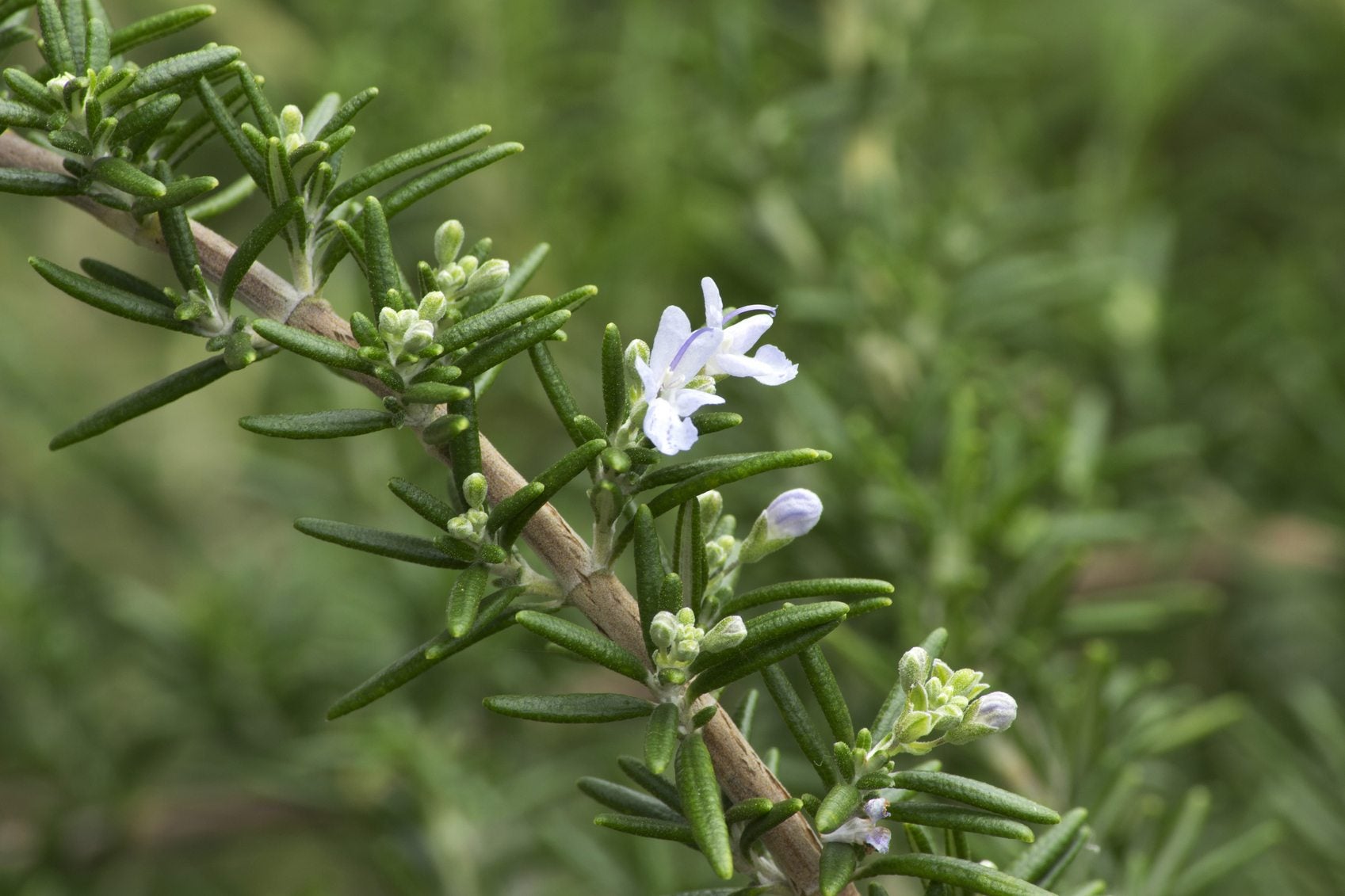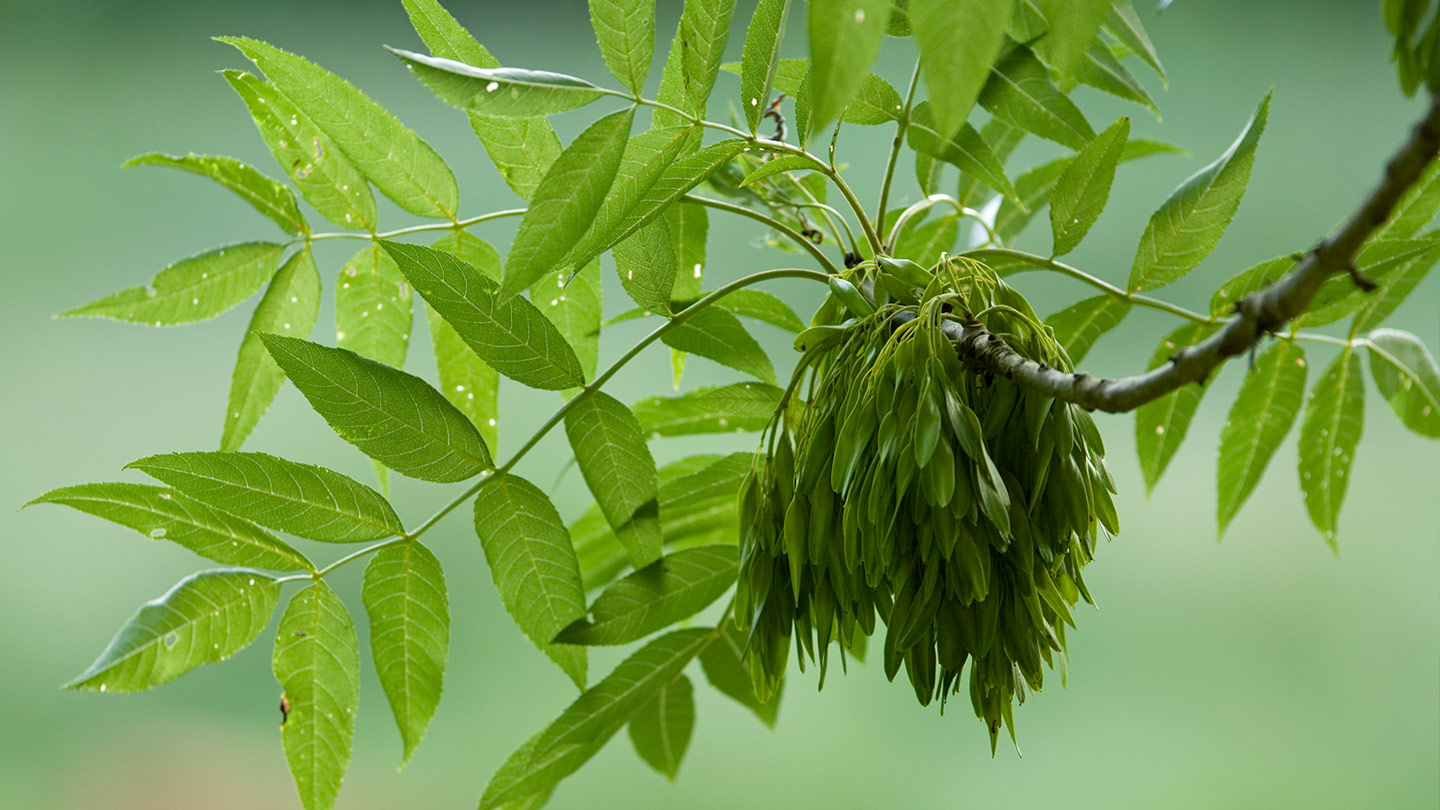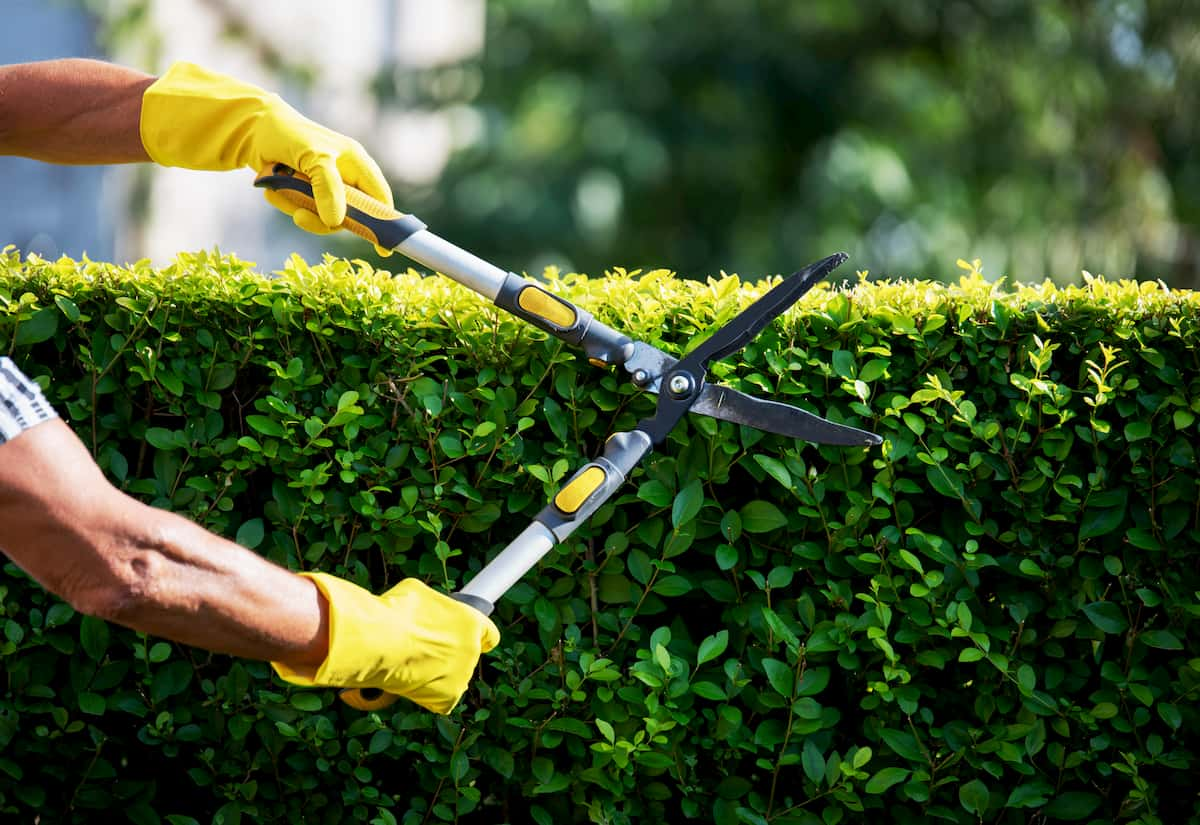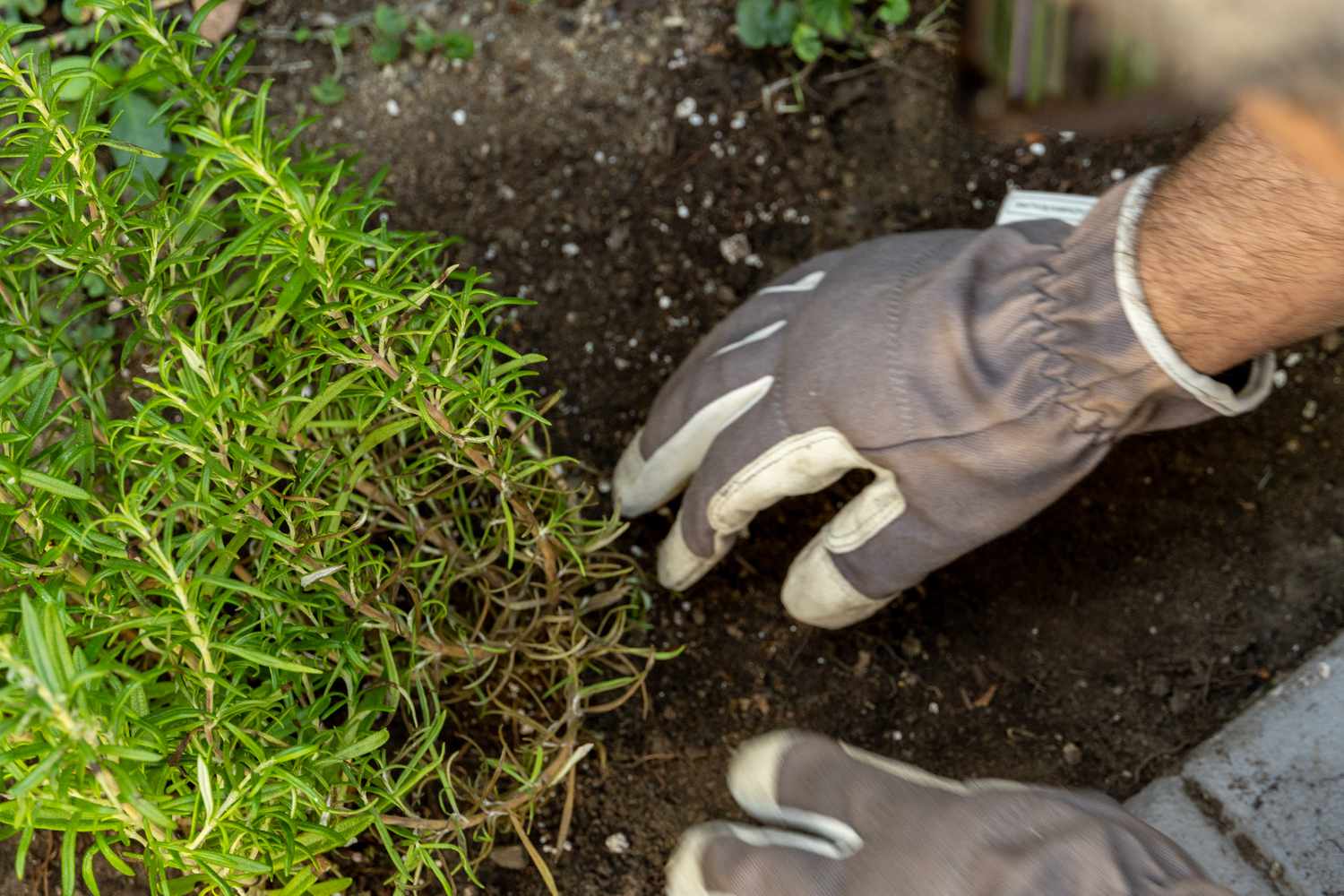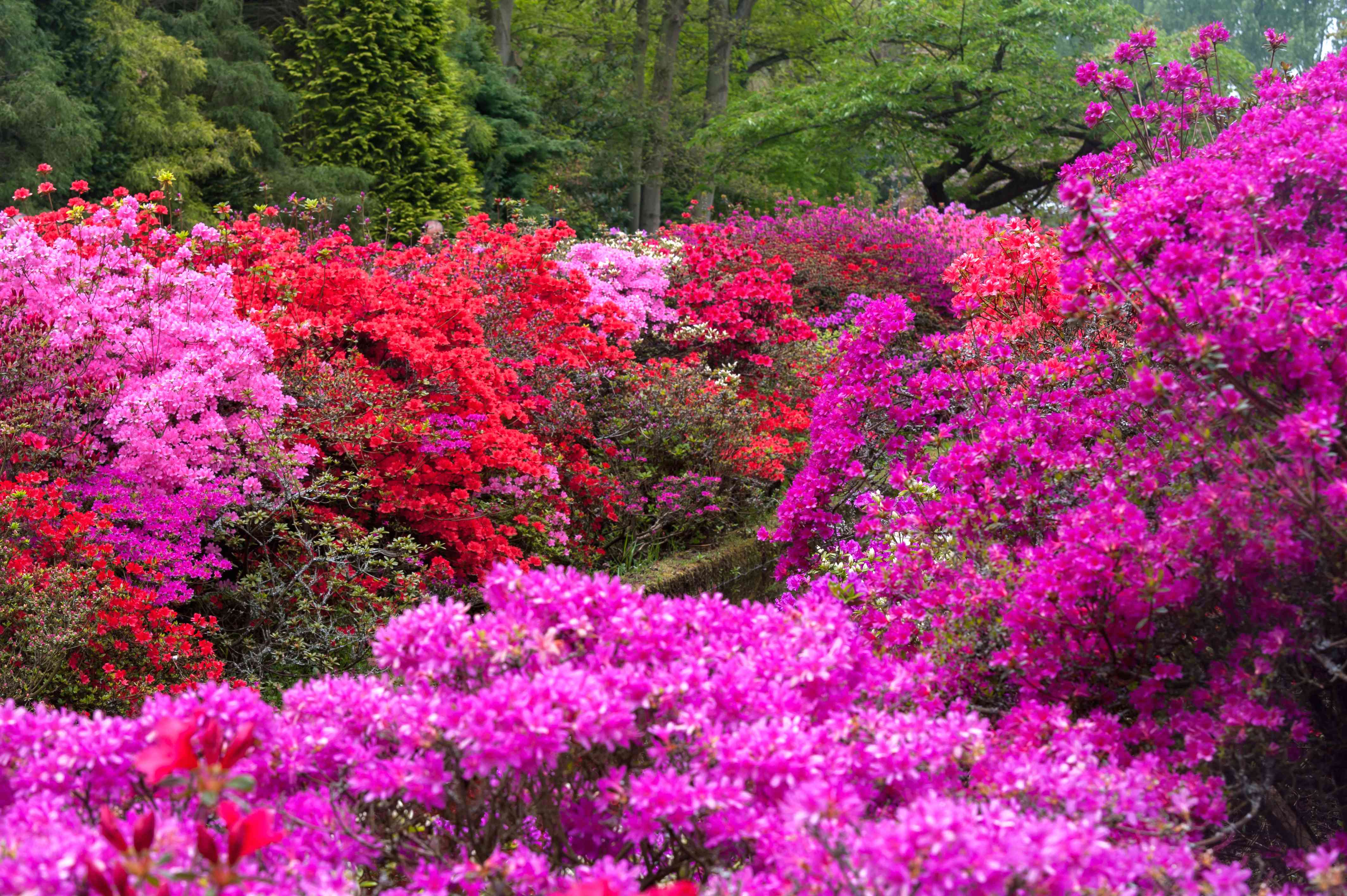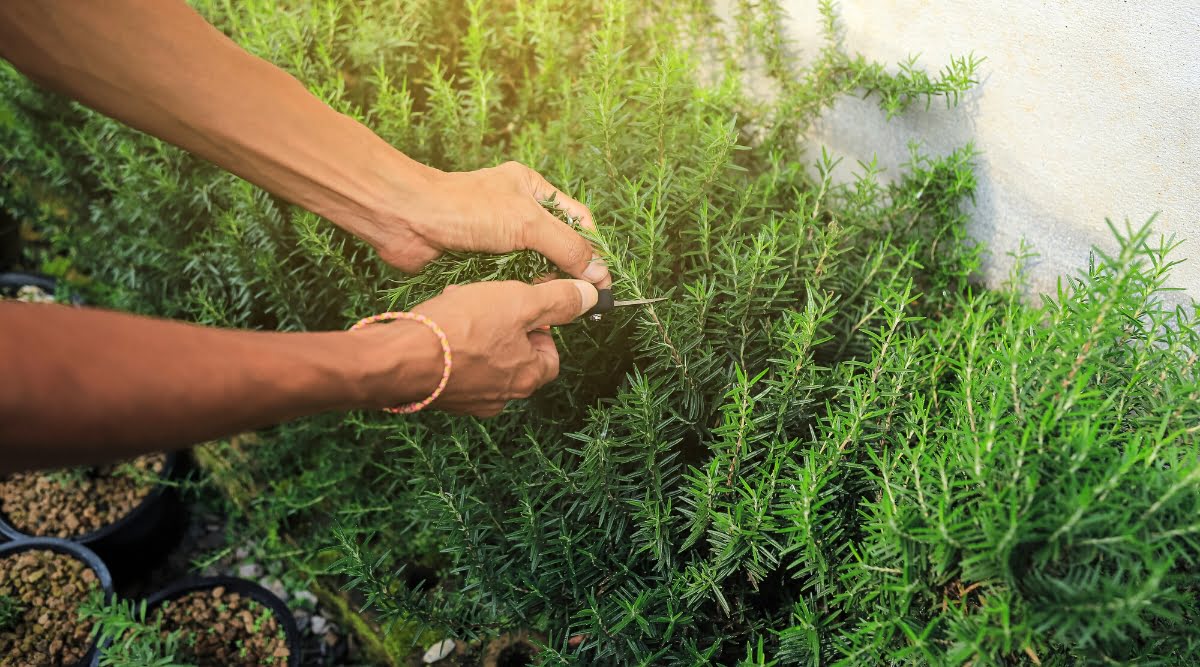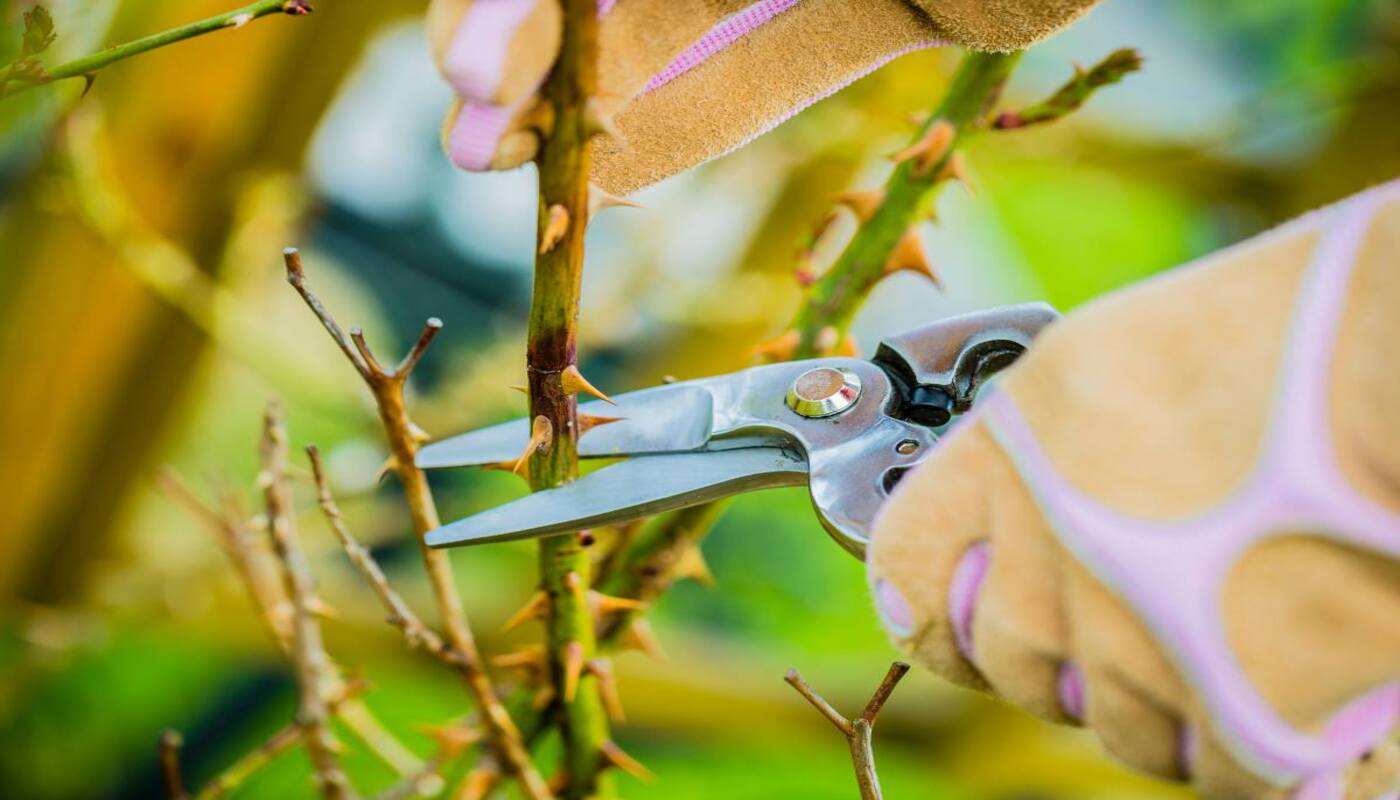Home>Types of Gardening>Ornamental Gardening>How To Identify Bushes And Shrubs
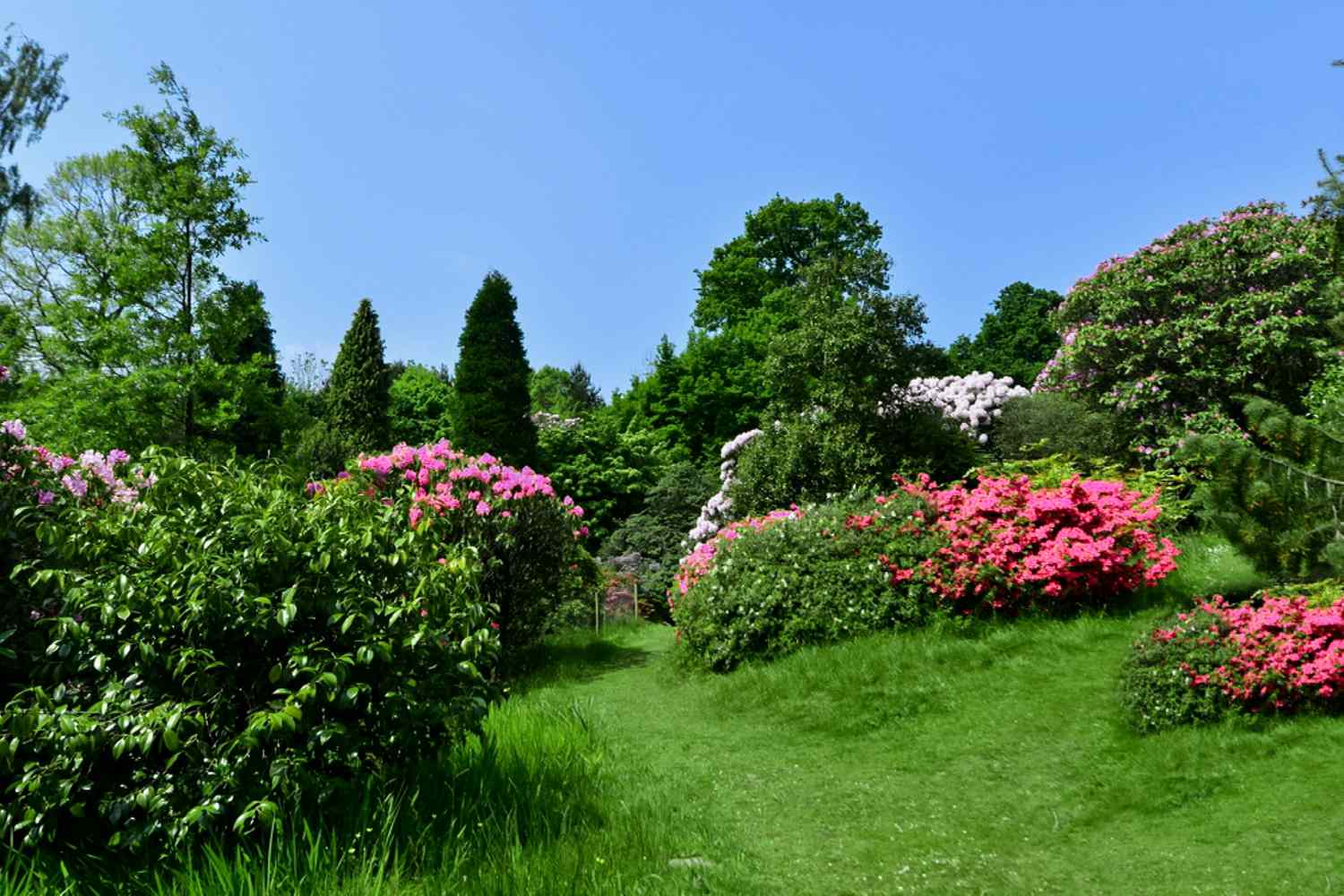

Ornamental Gardening
How To Identify Bushes And Shrubs
Modified: January 22, 2024
Learn how to identify different types of bushes and shrubs in your garden with this comprehensive guide on ornamental gardening.
(Many of the links in this article redirect to a specific reviewed product. Your purchase of these products through affiliate links helps to generate commission for Chicagolandgardening.com, at no extra cost. Learn more)
Table of Contents
- Introduction
- Importance of Identifying Bushes and Shrubs
- Tools You’ll Need
- Step 1: Observing the Plant’s Characteristics
- Step 2: Examining the Plant’s Leaves
- Step 3: Analyzing the Plant’s Flowers
- Step 4: Inspecting the Plant’s Bark and Branches
- Step 5: Considering the Plant’s Fruits or Seeds
- Step 6: Assessing the Plant’s Growth Habit
- Step 7: Researching and Consulting Resources
- Step 8: Seeking Expert Advice
- Conclusion
Introduction
Welcome to the fascinating world of ornamental gardening! As an ornamental gardener, you have the unique opportunity to transform your outdoor space into a vibrant and visually stunning oasis. One crucial aspect of successful ornamental gardening is being able to identify different types of bushes and shrubs.
Why is it important to identify bushes and shrubs, you might wonder? Well, the first and most obvious reason is so that you can properly care for and maintain them. Different types of bushes and shrubs have varying requirements when it comes to sunlight, water, soil conditions, and pruning techniques. By knowing what you’re dealing with, you can provide the optimal growing conditions for each plant, ensuring their health and longevity.
Another reason to identify bushes and shrubs is for aesthetic purposes. When you can confidently name and recognize the different species in your garden, you can create visually appealing arrangements. Whether you’re designing a formal garden with neatly trimmed hedges or a more eclectic space with a mix of flowering shrubs, knowing the specific plants will allow you to harmonize colors, heights, and textures.
But how do you go about identifying bushes and shrubs? How can you distinguish a rhododendron from a hydrangea or a boxwood from a juniper? Don’t worry – we’ve got you covered! In this article, we will guide you through the process of identifying different types of bushes and shrubs, providing you with the knowledge and tools you need to become a confident ornamental gardener.
Before we dive into the details, there are a few tools you might want to have on hand. These tools will assist you in examining and analyzing the different features of plants, making the identification process easier and more accurate. Some useful tools include pruning shears, a hand lens or magnifying glass, a camera or smartphone for taking photos, and a notebook for recording your observations.
Importance of Identifying Bushes and Shrubs
Identifying bushes and shrubs in your garden is not just a matter of curiosity, but it plays a crucial role in the overall success of your ornamental gardening endeavors. Here are a few reasons why identifying these plants is so important:
- Proper care and maintenance: Each type of bush or shrub has unique care requirements. By accurately identifying the plants in your garden, you can provide them with the specific care they need, including appropriate watering, fertilizing, and pruning techniques. This targeted approach ensures that your plants stay healthy, thrive, and reach their full potential.
- Pest and disease management: Different bushes and shrubs are susceptible to various pests and diseases. By knowing the specific plants in your garden, you can stay vigilant and identify potential problems early on. This allows you to take preventive measures or apply targeted treatments to protect your plants from infestations and diseases.
- Designing and arranging: Understanding the different types of bushes and shrubs gives you the power to create visually appealing and harmonious arrangements in your garden. With knowledge of their growth habits, sizes, colors, and textures, you can design stunning landscapes that showcase the unique beauty of each plant. Whether you’re going for a formal, structured look or a more natural, free-flowing aesthetic, accurate identification is crucial in achieving your desired outcome.
- Plant compatibility: Identifying bushes and shrubs allows you to choose and combine plants that are compatible with each other. Some plants have specific soil, light, or water requirements, and by knowing their characteristics, you can create plant combinations that thrive together. This compatibility not only ensures the health and vitality of your plants but also enhances their overall visual impact.
- Educational opportunities: The process of identifying different types of bushes and shrubs can be a valuable educational experience. It allows you to deepen your knowledge and understanding of the botanical world. You can learn about the origin, history, and uses of specific plants, expanding your horizons as a gardener and nature enthusiast.
Overall, accurate identification of bushes and shrubs is a fundamental aspect of successful ornamental gardening. It empowers you to provide proper care, manage potential issues, design visually appealing landscapes, create harmonious plant combinations, and continue your educational journey as a gardener. So, let’s dive into the process of identifying these incredible plants and unlock the full potential of your garden!
Tools You’ll Need
Having the right tools can make the process of identifying bushes and shrubs much easier and more accurate. Here are some essential tools you should have on hand:
- Pruning shears: Pruning shears are essential for trimming and shaping the foliage of bushes and shrubs. They come in different sizes and styles, so choose a pair that suits your hand size and comfort.
- Hand lens or magnifying glass: A hand lens or magnifying glass can be incredibly useful for examining the finer details of leaves, flowers, and stems. It helps you see small features like leaf veins, flower structures, and insect damage more clearly.
- Camera or smartphone: A camera or smartphone with a high-resolution camera can be handy for capturing detailed photos. These photos can serve as references for further inspection or for seeking expert advice if needed.
- Notebook: Keeping a dedicated notebook for recording your observations is important. You can jot down details such as leaf size and shape, flower color, plant height, and any other distinctive features. This record will help you compare and differentiate between different bushes and shrubs.
- Plant identification books or apps: Having access to plant identification books or using plant identification apps can be a valuable resource. These references provide detailed descriptions, images, and even interactive features to help you narrow down and identify various species.
- Gardening gloves: While not directly related to plant identification, wearing gardening gloves is essential for protecting your hands while handling plant material. They shield your skin from thorns, prickles, and potential allergens.
- Internet access: The internet is an invaluable tool for researching plant characteristics, browsing plant databases, and seeking online gardening communities for assistance. Access to the internet allows you to expand your knowledge and connect with fellow gardeners.
Remember, these tools are not only useful for identification purposes but are also valuable for general gardening tasks. Investing in good quality tools ensures their durability and your overall gardening success. Now that you’re equipped with the necessary tools, let’s move on to the exciting process of observing and identifying bushes and shrubs!
Step 1: Observing the Plant’s Characteristics
The first step in identifying bushes and shrubs is carefully observing their characteristics. This involves taking note of various features such as the plant’s overall shape, color, texture, and any distinctive traits. Here’s what you should pay attention to:
- Growth habit: Take a step back and observe the overall shape and growth habit of the plant. Is it a compact, rounded shrub, or a tall, erect bush? Does it have a sprawling, spreading habit or a weeping form? Understanding the growth habit is a crucial first step in narrowing down the possibilities.
- Leaf characteristics: Examine the leaves closely. Note their size, shape, arrangement on the stem, and texture. Are the leaves simple or compound? Are they narrow or broad? Are they smooth, hairy, or have distinctive markings? Pay attention to any unique characteristics that can help narrow down the identification.
- Flower characteristics: If the plant is in bloom, take time to observe and note the flower characteristics. Look at the shape, size, color, and arrangement of the flowers. Are they clustered in groups, solitary, or arranged in spikes? Do they have a fragrance? These details are often key indicators for identification.
- Bark and branches: While observing the plant, also take note of the bark texture, color, and any unique features, such as peeling bark or thorns. Additionally, examine the branches and note their growth pattern, whether they are opposite or alternate, and any other distinct attributes.
- Growth rate and size: Consider the growth rate and ultimate size of the plant. Does it grow slowly or rapidly? Will it remain small and compact, or will it eventually become a large shrub or even a small tree? These observations can help narrow down the range of possibilities.
- Habitat and location: Take into account the natural habitat and location where the plant is found. Some bushes and shrubs are native to specific regions or have specific soil or sunlight requirements. Understanding the native habitat can provide valuable clues in identifying the plant.
Make sure to take detailed notes on each of these characteristics as you observe the plant. These observations will serve as the foundation for further analysis and research. In the next step, we’ll delve deeper into the examination of the plant’s leaves to gain more insights into its identification. So, let’s move on to Step 2: Examining the Plant’s Leaves.
Step 2: Examining the Plant’s Leaves
Examining the leaves of a plant is a key step in identifying bushes and shrubs. Leaves provide valuable information about the plant’s species and can help narrow down the possibilities. Here’s what you should focus on when examining the leaves:
- Leaf arrangement: Observe how the leaves are arranged on the stem. Are they opposite each other, alternate, or clustered at the end of the branches?
- Leaf shape and size: Look closely at the shape and size of the leaves. Are they ovate, lanceolate, elliptical, or some other distinct shape? Measure the length and width of the leaves to help in identification.
- Leaf margin: Examine the edges of the leaves. Are they smooth, serrated, toothed, lobed, or wavy? The leaf margin can provide valuable clues about the plant’s identity.
- Leaf venation: Look at the arrangement of veins on the leaf surface. Are they parallel, pinnate (feather-like), palmate (fan-like), or even netted? The venation pattern can help differentiate between plant families and narrow down the identification.
- Leaf color and texture: Note the color and texture of the leaves. Are they green, variegated, or have any unique markings? Is the leaf surface smooth, glossy, rough, or pubescent (covered in fine hairs)? These characteristics can offer important clues.
- Leaf persistence: Determine whether the leaves are deciduous (fall off in winter) or evergreen (retain throughout the year). This information can help narrow down the possibilities to plants that are suitable for your climate.
As you examine the leaves, take detailed notes and, if possible, capture clear close-up photos. This documentation will be valuable for further research and comparison. In the next step, we will shift our focus to analyzing the plant’s flowers, which can provide crucial insights into its identification. So, let’s move on to Step 3: Analyzing the Plant’s Flowers.
Step 3: Analyzing the Plant’s Flowers
The flowers of a plant can provide valuable information for identifying bushes and shrubs. Each species has its own unique flower characteristics that can help narrow down the possibilities. Here is what you should focus on when analyzing the plant’s flowers:
- Flower shape and structure: Examine the overall shape and structure of the flowers. Are they saucer-shaped, tubular, bell-shaped, or some other distinct form? Note any unique features such as spurs or distinctive petal arrangements.
- Flower color: Take note of the color of the flowers. Are they white, yellow, pink, red, blue, or another shade? Pay attention to any variations in color, patterns, or markings on the petals.
- Flower size: Measure the size of the flowers, noting the diameter or length of the blooms. This information can help narrow down the identification, as flower sizes can vary among different species.
- Flower arrangement: Observe how the flowers are arranged on the stems. Are they solitary, clustered in groups, or arranged in inflorescences like spikes, umbels, or panicles?
- Fragrance: Pay attention to any fragrance emitted by the flowers. Some bushes and shrubs have distinct scents that can aid in their identification.
- Flowering season: Take note of when the plant blooms. Is it a spring, summer, or fall-flowering species? Flowering season can be a helpful clue for identification.
Make sure to record your observations and, if possible, capture clear photographs of the flowers from different angles. These details will be invaluable in identifying the plant. In the next step, we will shift our focus to the bark and branches of the plant, which can provide additional insights into its identification. So, let’s move on to Step 4: Inspecting the Plant’s Bark and Branches.
Step 4: Inspecting the Plant’s Bark and Branches
The bark and branches of a plant can reveal important characteristics that aid in identifying bushes and shrubs. By carefully inspecting these features, you can gather valuable information about the plant’s species. Here’s what you should focus on when inspecting the plant’s bark and branches:
- Bark texture and color: Examine the texture and color of the plant’s bark. Is it smooth, rough, peeling, or patterned? Note the color as well, as it can range from brown and gray to green or even multi-colored.
- Branching pattern: Observe how the branches are arranged on the plant. Are they opposite each other, alternate, or clustered? Note any unique branching patterns that may be characteristic of certain species.
- Thorns or spines: Look for the presence of thorns, spines, or prickles on the branches or stems. Not all bushes and shrubs have these, but if they do, it can be a helpful clue in identifying the plant.
- Bud arrangement: Examine how the buds are arranged on the branches. Are they opposite each other, alternate, or clustered at the tips? Note the shape and color of the buds as well.
- Twig color and texture: Take note of the color and texture of the current season’s twigs. Are they smooth, hairy, or have any distinctive markings? Twig color can range from green to red, brown, or gray, depending on the species.
- Growth habit: Consider the overall growth habit of the plant as seen in its branches. Is it compact and bushy, or does it have an open, spreading habit? This observation can provide additional clues for identification.
As you inspect the bark and branches, be sure to take detailed notes and, if possible, capture clear photographs. These records will be valuable for further research and comparison. In the next step, we will shift our focus to considering the plant’s fruits or seeds, which can provide further insights into its identification. So, let’s move on to Step 5: Considering the Plant’s Fruits or Seeds.
Step 5: Considering the Plant’s Fruits or Seeds
Examining the fruits or seeds of a plant is an important step in identifying bushes and shrubs. The unique characteristics of these reproductive structures can provide valuable insights into the plant’s species. Here’s what you should focus on when considering the plant’s fruits or seeds:
- Fruit type: Identify the type of fruit present on the plant. Is it a berry, capsule, nut, drupe, or samara? Understanding the fruit type can help narrow down the range of possibilities.
- Fruit color and size: Note the color and size of the fruits. Are they red, purple, black, or some other shade? Measure the diameter or length of the fruits, as this can also assist in identification.
- Seed characteristics: Examine the seeds within the fruits. Note their shape, color, and any unique features. Some seeds may be winged, hairy, or have other distinctive adaptations.
- Seed dispersal mechanisms: Consider the mechanisms by which the seeds are dispersed. Do they have hooks or barbs for attachment to animals or clothing? Are they dispersed by wind, water, or animals?
- Seed viability and germination requirements: Some seeds require specific conditions to germinate successfully. Research the germination requirements of the plant’s seeds, such as temperature, light, moisture, or stratification needs.
- Fruit or seed associations: Some bushes and shrubs have specific associations with certain fruits or seeds. For example, rose bushes produce rose hips, while holly bushes bear red berries. These associations can provide valuable clues for identification.
Take detailed notes on the characteristics of the fruits or seeds and, if possible, capture clear photographs. These observations will be valuable for further research and comparison. In the next step, we will shift our focus to assessing the plant’s growth habit, which can provide additional insights into its identification. So, let’s move on to Step 6: Assessing the Plant’s Growth Habit.
Step 6: Assessing the Plant’s Growth Habit
Assessing the growth habit of a plant is an essential step in identifying bushes and shrubs. The way a plant grows and its overall shape can provide valuable clues about its species. Here’s what you should focus on when assessing the plant’s growth habit:
- Plant height: Measure the height of the plant, from the base to the tip. Is it low-growing, reaching only a few inches off the ground, or does it tower several feet high? Understanding the plant’s height can help narrow down the range of possibilities.
- Plant width and spread: Assess the width and spread of the plant. Is it compact and dense, or does it have a sprawling or spreading habit? Consider the overall shape of the plant when evaluating its growth habit.
- Growth rate: Observe how quickly the plant grows. Is it a slow-growing species that takes several years to reach maturity, or does it grow rapidly and establish itself relatively quickly?
- Suckering or clumping: Some bushes and shrubs have a tendency to spread via underground runners or clumping growth. Take note if you observe any signs of suckering or clumping, as this can be an important characteristic in identification.
- Habitat preferences: Consider the plant’s natural habitat preferences. Some species thrive in full sun, while others prefer shade. Understanding the plant’s preferred growing conditions can help narrow down the possibilities.
- Adaptations to climate or soil conditions: Note any adaptations the plant may have to specific climate or soil conditions. For example, certain shrubs may be more tolerant of drought or have special adaptations to survive in extreme cold.
As you assess the plant’s growth habit, take detailed notes and, if possible, capture clear photographs from different angles. These observations will be valuable for further research and comparison. In the next step, we will discuss the importance of researching and consulting reliable resources to aid in the identification process. So, let’s move on to Step 7: Researching and Consulting Resources.
Step 7: Researching and Consulting Resources
Researching and consulting reliable resources is a crucial step in identifying bushes and shrubs. There are numerous references and tools available that can assist in narrowing down the possibilities and confirming the plant’s identity. Here’s what you should do when researching and consulting resources:
- Plant identification books: Utilize plant identification books that are specific to your region or focus on ornamental gardening. These books often include detailed descriptions, photographs, and identification keys to help you narrow down the species.
- Online plant databases: Take advantage of online plant databases that provide comprehensive information about different types of bushes and shrubs. These databases typically include photos, descriptions, and even user reviews to aid in identification.
- Botanical gardens and arboretums: Visit local botanical gardens and arboretums in your area. They often have extensive collections of plants, and the botanical experts there can assist you in identifying specific species.
- Online gardening forums and communities: Participate in online gardening forums and communities where you can seek advice from experienced gardeners. Share your observations and photos to get input and suggestions from others who may have encountered similar plants.
- Local extension offices or horticulture experts: Contact your local extension offices or horticulture experts for guidance. They can provide valuable insights and recommend resources specific to your region.
- Plant identification apps: Try using plant identification apps on your smartphone or tablet. These apps often utilize image recognition technology to identify plants based on photos you provide.
When utilizing these resources, cross-reference the information you gather and ensure that you rely on reputable sources. Pay attention to details such as plant characteristics, geographic location, and growing requirements to make an accurate identification. In the next step, we will discuss the importance of seeking expert advice when needed. So, let’s move on to Step 8: Seeking Expert Advice.
Step 8: Seeking Expert Advice
Sometimes, despite your best efforts, identifying bushes and shrubs can be a challenging task. In such cases, it is important to seek expert advice to help you accurately identify the plant. Here’s why and how you should seek expert advice:
- Specialized knowledge: Expert gardeners, horticulturists, or botanists have specialized knowledge and experience in plant identification. They can quickly recognize key characteristics and narrow down the possibilities.
- Access to resources: Experts have access to extensive plant databases, herbariums, and other resources that can aid in identification. They can consult these references to verify the plant’s identity.
- Hands-on experience: Experienced professionals have encountered a wide range of plant species throughout their careers. Their hands-on experience allows them to make accurate identifications based on subtle nuances and distinguishing features.
- Networking opportunities: Experts often have connections with other specialists and professionals in the field. They can help connect you with the right resources or put you in touch with someone who can provide further assistance.
- Local knowledge: Experts familiar with your local region can offer insights specific to your area. They are knowledgeable about native species, common ornamental varieties, and region-specific growing conditions.
If you have exhausted your own resources and are still unsure about the identification of a particular plant, reach out to local gardening or horticulture organizations, universities, or botanical gardens. Consult with experts who can offer guidance based on your observations and provide you with a confident identification.
Remember to provide as much information as possible, including detailed descriptions, photographs, and any notes you have taken during the identification process. This will assist the experts in making an accurate assessment. With their assistance, you can confidently identify the bushes and shrubs in your garden.
By following these eight steps—observing characteristics, examining leaves and flowers, inspecting bark and branches, considering fruits or seeds, assessing growth habit, researching resources, and seeking expert advice—you will become proficient in identifying the many diverse species of bushes and shrubs that adorn your ornamental garden.
Now armed with this knowledge, you can better care for and appreciate the unique beauty of each plant, enhancing the overall aesthetic and success of your garden.
Conclusion
Identifying bushes and shrubs in your ornamental garden is an essential skill for any gardener. It allows you to provide proper care, maintain plant health, design harmonious landscapes, and expand your knowledge of the botanical world. By following the step-by-step process outlined in this guide, you can confidently identify the various species of bushes and shrubs that adorn your garden.
Starting with observing the plant’s characteristics, examining the leaves and flowers, inspecting the bark and branches, considering the fruits or seeds, assessing the growth habit, researching resources, and seeking expert advice if needed, you’ll develop a comprehensive understanding of each plant’s unique traits.
Throughout this process, be sure to keep detailed notes, take clear photographs, and consult reputable resources. Utilize plant identification books, online databases, botanical gardens, forums, and experts to aid in the identification journey. Remember, accurate identification is not always an easy task, but with patience, persistence, and the right resources, you can overcome any challenges that may arise.
By accurately identifying your bushes and shrubs, you can provide them with the care they need, manage pests and diseases effectively, create visually stunning plant arrangements, and ensure compatibility with other plants in your garden. Ultimately, this knowledge will enhance the beauty and success of your ornamental gardening endeavors.
So, put your newfound knowledge to use and continue to explore the diverse world of bushes and shrubs. With each identification, you’ll deepen your connection with nature and gain a greater appreciation for the wonders of the plant kingdom. Happy gardening!
